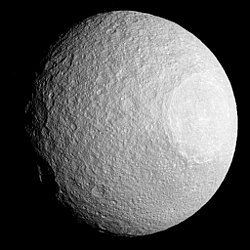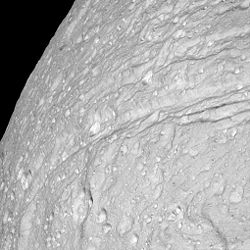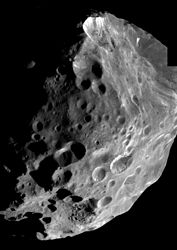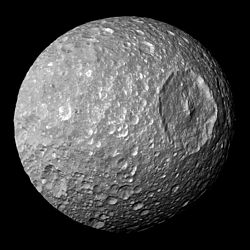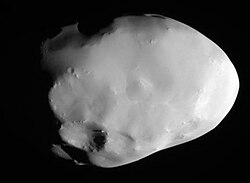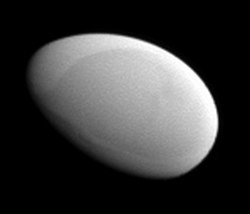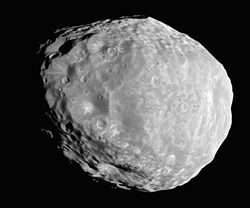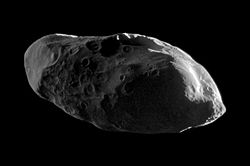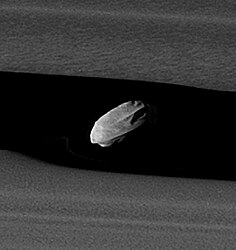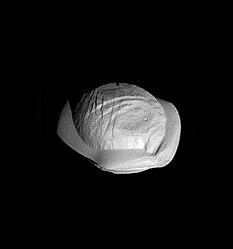Cassini–Huygens
(Redirected from Cassini)
NASA space mission sent to the Saturn system | |||||
| Upload media | |||||
| Instance of |
| ||||
|---|---|---|---|---|---|
| Named after | |||||
| Operator | |||||
| Has part(s) | |||||
| Start point | |||||
| Destination point | |||||
| Space launch vehicle |
| ||||
| UTC date of spacecraft launch |
| ||||
| Significant event | |||||
| Mass |
| ||||
| official website | |||||
| |||||
Français : Cassini–Huygens est une sonde spatiale lancée en 1997 pour étudier Saturne et ses satellites.
English: Cassini–Huygens is an unmanned spacecraft launched by NASA on 1997 and sent to the planet Saturn.
Spacecraft
[edit]-
Cassini-Huygens is installed to the payload adapter (july 1997)
-
Cassini preflight testing (october 1996)
-
Cassini before launch (october 1997)
-
Huygens backside (september 1997)
-
Huygens probe opened (september 1997)
-
Launch
Jupiter
[edit]-
Jupiter as seen by the space probe "Cassini". (novembre 2003)
-
Jupiter, Europa and Callisto
-
True-color simulated view of Jupiter is composed of 4 images taken by Cassini spacecraft
Saturn
[edit]-
The huge storm (great white spot) churning through the atmosphere in Saturn's northern hemisphere (march 2012)
-
Saturn's north polar vortex and hexagon along with its expansive rings. (july 2014)
-
Saturn's Hexagon in false color (november 2012)
-
Saturn's Hexagon. Movie, made from images obtained by Cassini's imaging cameras, is the first to show the hexagon in color filters, and the first movie to show a complete view from the north pole down to about 70 degrees north latitude (december 2012).
-
Swirling hurricane-like vortex at Saturn's south pole (october 2006)
-
Photomontage of Saturn with a false-colour image of ultraviolet aurora (january 2004)
Rings
[edit]-
The full set of main rings, imaged as Saturn eclipsed the sun from the vantage of the Cassini spacecraft on September 15, 2006 (brightness is exaggerated). The "pale blue dot" at the 10 o'clock position, outside the main rings and just inside the G Ring, is Earth.
-
Cassini image mosaic of the unlit side of the inner B Ring (top) and outer C Ring (bottom) near Saturn's equinox, showing multiple views of the shadow of Mimas. The shadow is attenuated by the denser B ring. The Maxwell Gap is below center.
-
Dark B Ring spokes in a low-phase-angle Cassini image of the rings' unlit side. Left of center, two dark gaps (the larger being the Huygens Gap) and the bright (from this viewing geometry) ringlets to their left comprise the Cassini Division.
-
Cassini image of the sun-lit side of the rings taken in 2009 at a phase angle of 144°, with bright B Ring spokes.
-
Cassini division (september 2007)
-
Saturn's rings from the dark side (decembre 2012)
-
[Shadows of Saturn's rings
Titan
[edit]-
Epimetheus, Rings and Titan (april 2006).
-
mosaic of Titan's surface was made from 16 images. (february 2005)
-
Permanent hurricane at its south pole (july 2012)
-
false-color mosaic shows all synthetic-aperture radar images to date of Titan's north polar region. Approximately 60 percent of Titan's north polar region, above 60 degrees north latitude, is now mapped with radar. About 14 percent of the mapped region is covered by what is interpreted as liquid hydrocarbon lakes.(october 2007=
-
mosaic of three frames provides unprecedented detail of the high ridge area including the flow down into a major river channel from different sources. (january 2012)
-
Doom Mons and Sotra Patera, apparent cryovolcanic features in false colors (december 2010)
Enceladus
[edit]-
the south pole(july 2005).
-
Tortured southern polar terrain of Saturn's moon Enceladus appears strewn with great boulders of ice (july 2005)
-
High-resolution, en:false-color view of "tiger stripe" fractures in the south polar region of Saturn's moon Enceladus with en:brightness temperatures from the CIRS instrument overlain (july 2005).
-
North pole (october 2005)
-
Enceladus backlit by the sun show the fountain-like sources of the fine spray of material that towers over the south polar region(november 2005)
Iapetus
[edit]-
First high-resolution glimpse of the bright trailing hemisphere of Saturn's moon Iapetus. (october 2007)
-
Equatorial ridge of Iapetus (september 2007)
-
Equatorial ridge of Iapetus (september 2007)
-
photomosaic of Iapetus combining four Cassini images (december 2004)
Dione
[edit]-
Ringside with Dione (october 2005)
-
Enhanced color composite of Saturn's moon Dione (december 2014)
-
Dione's tortured complex of bright cliffs. At lower right is the feature called Cassandra, exhibiting linear rays extending in multiple directions(july 2006)
-
within a 60-kilometer-wide (37-mile) impact crater [Amastrus] along the feature called Padua Chasmata (october 2005)
Tethys
[edit]-
Enhanced-color mosaic of Tethys (april 2015)
-
impact crater Odysseu (april 2015).
-
impact crater Odysseu (december 2005).
-
Melanthius Crater (august 2006).
-
Southernmost extent of Ithaca Chasma (september 2005)
Other moons
[edit]-
Close up Phoebe
-
Mimas and Herschel Crater (130 kilometers diameter) (february 2010)
-
Hyperion in false color (September 2005)
-
Rhea (november 2005)
-
Telesto (september 2005)
-
Methone (may 2012)
-
Janus (september 2010)
-
Epimetheus (december 2007)
-
Pandora (December 2016)
-
Prometheus (January 2010)
-
Atlas (April 2017)
-
Daphnis (January 2017)
-
Pan (march 2017)




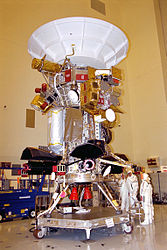
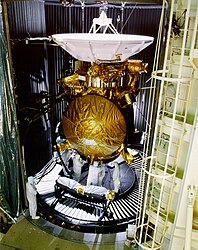






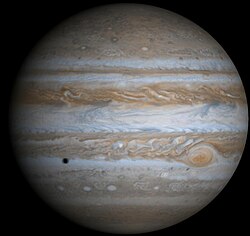



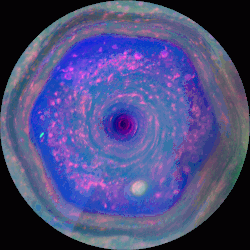

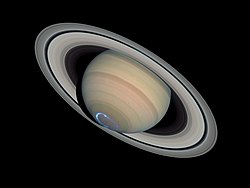

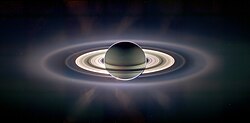

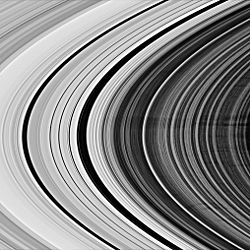




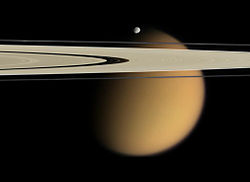




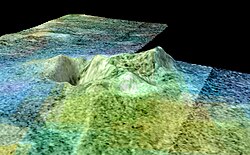

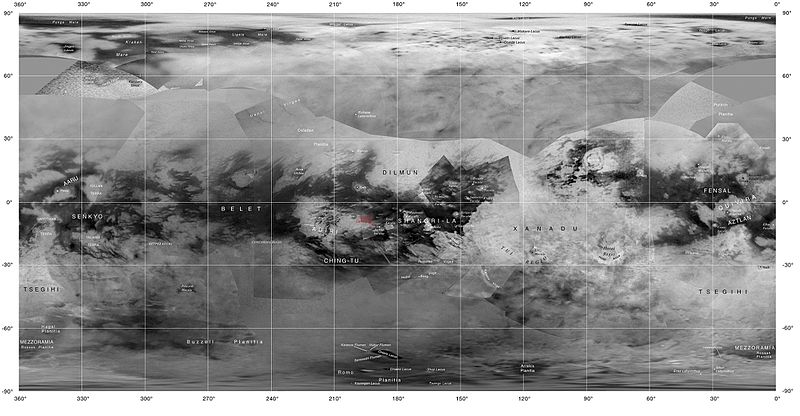






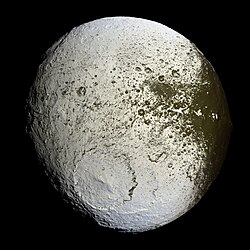



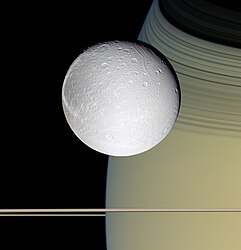


![within a 60-kilometer-wide (37-mile) impact crater [Amastrus] along the feature called Padua Chasmata (october 2005)](https://upload.wikimedia.org/wikipedia/commons/thumb/4/47/Dione_PIA07748_-Amastrus_grooves.jpg/250px-Dione_PIA07748_-Amastrus_grooves.jpg)

